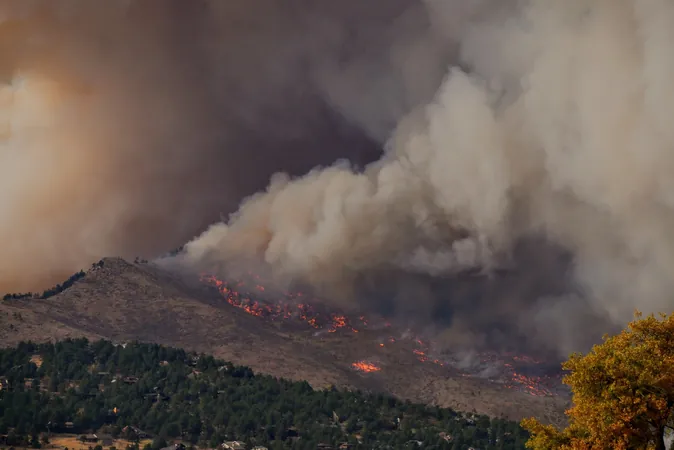
Devastating Impact of Megafires: How Smoke Can Slash Orchard Nut Yields by Up to 50%
2024-10-02
Recent Research Findings
Recent research from the University of California, Davis, has unveiled alarming evidence that prolonged exposure to smoke from catastrophic wildfires significantly lowers the energy stores of orchard trees, potentially cutting their nut yields by a staggering 50%. This shocking discovery not only sheds light on a less-discussed consequence of megafires but also raises concerns about the overall health of both agricultural and natural ecosystems.
Published on October 2 in *Nature Plants*, the study emphasizes a shift in focus from the well-documented effects of smoke on human health to the detrimental impact on plant vitality. Lead researcher Jessica Orozco, a postdoctoral fellow in the Department of Plant Sciences, commented, “While much research has emphasized how wildfires affect humans, our findings demonstrate that trees are equally susceptible to the damaging consequences of smoke exposure.”
The Dark Reality of Smoke-Drenched Skies
The comprehensive research assessed the health of almond, pistachio, and walnut trees across 467 orchards in California's Central Valley between 2018 to 2022. The stark realities of 2020 megafires, which ravaged over 4.2 million acres, filled the air with smoke and ash, presenting researchers with an opportunity to analyze the impact of smoke on tree health while simultaneously investigating their carbohydrate storage abilities.
“Carbohydrates are vital for tree survival,” Orozco noted. "They not only facilitate growth but also serve as energy reserves during stress periods, including heat spikes and droughts."
However, the presence of smoke alters photosynthesis, the crucial process by which trees convert sunlight into energy. Smoke particles can block sunlight directly while also diffusing what little light penetrates the haze. Although diffused light might seem beneficial, Orozco explains that the heavy smoke likely negated any advantages gained from increased light diffusion.
Lingering Effects Led to Stark Yield Declines
The team discovered that the adverse effects of megafire smoke extend well beyond the immediate aftermath of a wildfire. By reducing carbohydrate levels, smoke exposure contributed to alarming declines in nut production, with some orchards suffering reductions of between 15% to an astonishing 50%. The timing of wildfires coincides with critical periods for trees, as they begin to store carbohydrates essential for winter dormancy and rejuvenation in spring.
Orozco expressed surprise at the extended effects of smoke, stating, “We anticipated some impact during periods of dense smoke. However, the long-lasting repercussions and significant yield declines took us aback.”
In a quest for answers, research teams are still investigating the specific components of megafire smoke responsible for deteriorating carbohydrate levels. The 2020 wildfires saw marked increases in both ozone and particulate matter, factors known to disrupt photosynthesis. It remains unclear whether these elements acted independently or collectively to hamper tree energy reserves.
Broader Implications for Agriculture and Ecosystems
The implications of these findings extend beyond individual orchards, highlighting a pressing need for farmers and policymakers to consider wildfire smoke when designing strategies for managing agricultural lands. As wildfire seasons grow longer and more intense due to climate change, the health of our essential forest and orchard ecosystems is under unprecedented threat.
As researchers continue to unravel the complexities of wildfire impacts, one thing is certain: safeguarding our trees is critical not only for nut production but also for the long-term sustainability of agricultural practices as a whole. As we face a future marked by extreme weather events, understanding and mitigating the effects of wildfires on plant health is crucial for the stability of our food systems.



 Brasil (PT)
Brasil (PT)
 Canada (EN)
Canada (EN)
 Chile (ES)
Chile (ES)
 España (ES)
España (ES)
 France (FR)
France (FR)
 Hong Kong (EN)
Hong Kong (EN)
 Italia (IT)
Italia (IT)
 日本 (JA)
日本 (JA)
 Magyarország (HU)
Magyarország (HU)
 Norge (NO)
Norge (NO)
 Polska (PL)
Polska (PL)
 Schweiz (DE)
Schweiz (DE)
 Singapore (EN)
Singapore (EN)
 Sverige (SV)
Sverige (SV)
 Suomi (FI)
Suomi (FI)
 Türkiye (TR)
Türkiye (TR)